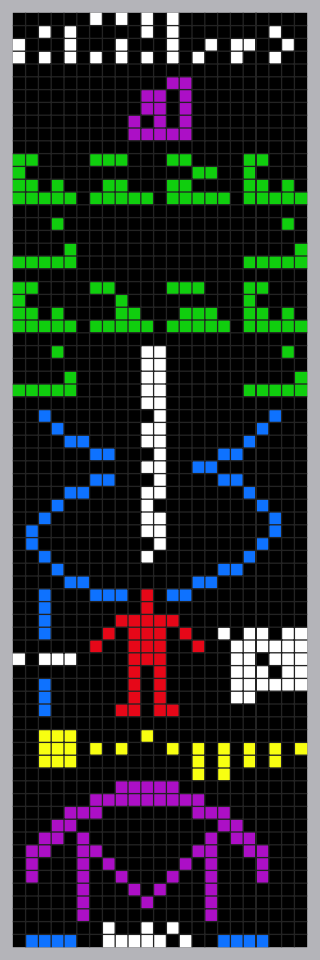This post has been changed to add outside comment on the initiative.
You’ve heard of SETI, the Search for Extraterrestrial Intelligence. It involves tuning in for alien radio signals or light beacons. But a group called METI International (short for Messages to Extraterrestrial Intelligence) wants to take a more proactive role by beaming out messages from Earth.
Douglas Vakoch, the former Director of Interstellar Message Composition at the SETI Institute, is launching the METI Initiative with one planet in mind: the recently discovered planet around Proxima Centauri, the closest star to Earth (and thus the closest exoplanet.)
Vakoch says that METI has more than a few targets in mind, there are a few advantages to Proxima Centauri b.
“First, it’s close to our solar system, keeping the time for a roundtrip exchange as short as possible,” Vakoch says. “Second, some have suggested that this exoplanet is potentially habitable.”
Programs like METI have an … uneven history. In 1974, Frank Drake, Carl Sagan, and others composed the Arecibo Message, an uncoded message of scientific facts in a simple graphic format meant to announce our existence in a readily comprehensible format.
But in 2008, Doritos also launched a message to the stars, beaming a video of “a tribe of Doritos escaping from the pack and sacrificing one of their own to the God of Salsa, as soon as there are no humans around.”
But Vakoch isn’t about to send something the aliens won’t understand. After all, he’s been in the business of all things alien for more than a decade.
“To be intelligible, any message to extraterrestrials needs to be written in a universal language, and that won’t be English or Swahili,” Vakoch says. “We begin with mathematics, because it seems likely that scientists on any world will need to know at least the essentials of math.”
Then there’s the question of why, which Vakoch paraphrases SETI research Ronald Bracewell in saying that humanity should “join the Galactic Club.” Even bigger, though, is the question of “why should we broadcast that we’re here in case we, you know, get invaded.” Of the many, many things that Stephen Hawking has said publicly in recent years, the dangers of alien contact has come up again and again. Some in the SETI community say a cautious approach should be taken, with a consortium saying, “We know nothing of ETI’s intentions and capabilities, and it is impossible to predict whether ETI will be benign or hostile.”
Vakoch disagrees with the idea that we shouldn’t be broadcasting our position, saying that our presence is likely already known.
“Many people fear that METI will lead to an alien invasion. But any civilization that has the ability to travel between the stars could already know of our existence through our accidental radio and television leakage,” Vakoch says.
Lucianne Walkowicz, an astronomer at the Adler Planetarium, was part of that consortium. While she still falls on the side of caution, saying “intentionally signaling civilizations beyond Earth has consequences for everyone on the planet,” for her, the caution is not so much in reaching out so much as who is speaking for Earth.
“I’m not all doom and gloom — I don’t think that intentionally messaging planets around other stars is necessarily a bad thing, but I also don’t think it should be the unilateral decision of a small group of people, no matter how well-intentioned,” she says, adding that she’d like to see some transparency in the proceedings that would come through a large scale initiative. “Looking at the METI International Board of Directors and Advisors, I see a group of smart, interesting people, who probably hope to do well by our species … but they also represent a very small fraction of the planet, and their decisions affect us all.”
Using a facility in Boquete, Panama, METI will look for laser pulses emanating from Proxima b, a sign of a sort of extraterrestrial beacon. Because Proxima Centauri (and it’s more giant companions, Alpha Centauri A and B) are mostly southern sky stars, this won’t be possible until early 2017. Proxima b is just one of several potential targets, ideal because it’s nearby and potentially habitable. (The next closest potentially habitable exoplanet is Wolf 1061c, slightly less than 14 light years away.) Vakoch says, “We haven’t selected the specific stars we’ll target, as that depends in part on where the transmitter is located.”
“The goal of METI is to signal to other intelligence in the universe that we’re actively reaching out,” Vakoch says. “For at least some civilizations, it may not be enough for them to know we’re here. They may be looking for an indication that we’re actively attempting to make contact.”











